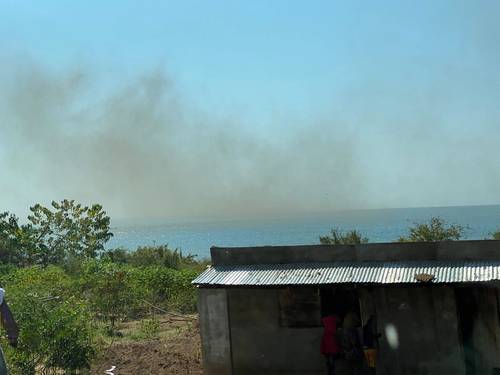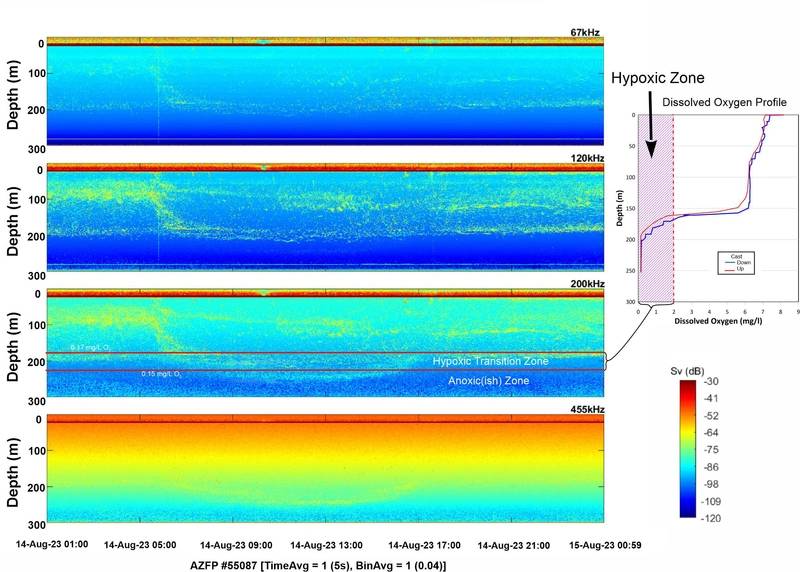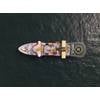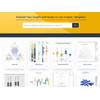AZFP Monitors Diving Insects in Lake Malawi

Figure 2. Emergence of the adult Chaoborus edulis forming dense clouds above the lake. Image courtesy ASL
Dr. Philip Matthews, Associate Professor in the Department of Zoology at the University of British Columbia and winner of the 2023 annual Acoustic Zooplankton Fish Profiler (AZFP) award, and Dr Maxon Ngochera, Chief Fisheries Research Officer, Malawi, have now completed their field work. This work centered on examining the unmatched diel migration of the aquatic larvae of the Chaoborus edulis, a midge fly that is abundant in Lake Malawi, East Africa. For more details on his winning proposal CLICK HERE.
The goal of this research was to use ASL’s multifrequency AZFP to better understand the physiology and ecology of Chaoborus edulis larvae, the deepest free-diving insects in the world. The AZFP revealed that these aquatic midge larvae dive 200 m into the hypoxic zone of the lake during the day to avoid fish predation.
Fish avoid this zone as the concentration of oxygen drops to values below their tolerance for survival (≤ 2.0 mg/l). Dr. Matthews and his team were instrumental in discovering how this organism regulates its buoyancy to achieve vertical ballasting over such a large range. Coupled with the AZFP mooring were a series of water quality monitoring instruments that measured dissolved oxygen (DO), pH, and oxygen reduction potential. Figure 1 shows echograms of the vertical migration of the Chaoborus edulis along with a DO profile illustrating the hypoxic and anoxic zones on the 200 kHz panel. Note the steep dive of this species at about 6 am as they move deeper into the water column to avoid predator fish. Figure 2 depicts the emergence of the adult phase of the midge fly as they rise out of the water to form dense clouds.
 Figure 1. AZFP echograms showing the diel vertical migration of the Chaoborus edulis and the depth of the hypoxic zone.
Figure 1. AZFP echograms showing the diel vertical migration of the Chaoborus edulis and the depth of the hypoxic zone.
Image courtesy ASL













 December 2025
December 2025



